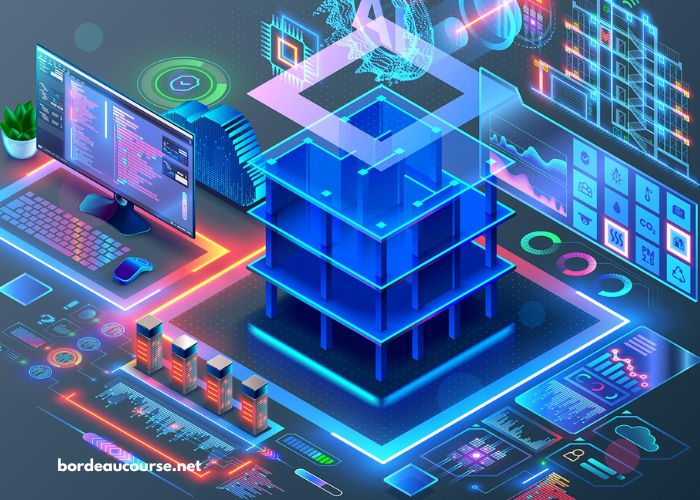The rapid pace of technological advancement is reshaping every facet of our lives—from how we communicate, work, and travel to how businesses operate and grow. Staying up-to-date with the latest trends is not only essential for tech enthusiasts but also crucial for professionals across all industries. This step-by-step breakdown explores the most prominent rising tech trends of the modern age, providing insights into their development, applications, and potential future impact.
H2: Artificial Intelligence (AI) and Machine Learning (ML)
H3: What Is AI and ML?
Artificial Intelligence (AI) refers to the simulation of human intelligence in machines that are programmed to think, learn, and make decisions. Machine Learning (ML) is a subset of AI that enables systems to learn from data and improve over time without being explicitly programmed.
H3: Current Applications
-
Healthcare: AI is revolutionizing diagnostics, drug discovery, and patient care.
-
Finance: AI-powered algorithms detect fraud and manage portfolios.
-
Retail: Personalized shopping experiences and customer service chatbots are common.
H3: Future Potential
AI and ML will continue to drive automation, data analytics, and predictive systems across industries. Generative AI tools like ChatGPT and DALL·E are setting new standards in content creation and problem-solving.
H2: Internet of Things (IoT)
H3: Overview of IoT
The Internet of Things (IoT) refers to interconnected physical devices that collect and exchange data through the internet. These devices include sensors, wearables, home appliances, vehicles, and more.
H3: How IoT Is Transforming Daily Life
-
Smart Homes: Devices like smart thermostats, lighting, and security systems.
-
Wearables: Health-monitoring devices that provide real-time data.
-
Agriculture: IoT-enabled irrigation and crop-monitoring systems.
H3: Future of IoT
IoT will play a crucial role in smart cities, industrial automation, and energy efficiency. Integration with AI will further enhance predictive capabilities and system optimization.
H2: Blockchain and Decentralized Systems
H3: Understanding Blockchain
Blockchain is a distributed ledger technology that ensures transparency, security, and immutability of data. It is the foundational technology behind cryptocurrencies like Bitcoin and Ethereum.
H3: Use Cases Beyond Cryptocurrency
-
Supply Chain Management: Tracking and authenticating goods from source to consumer.
-
Healthcare: Securing patient records and enhancing interoperability.
-
Voting Systems: Ensuring tamper-proof digital voting.
H3: The Decentralized Future
Decentralized finance (DeFi) and Web3 applications are promoting user ownership and disrupting traditional finance and internet models. Blockchain continues to gain traction across sectors due to its security and transparency.
H2: 5G and Next-Gen Connectivity
H3: What is 5G?
5G is the fifth generation of mobile networks, offering higher speeds, lower latency, and increased capacity compared to 4G. It enables seamless communication among devices and supports emerging tech like AR, VR, and autonomous vehicles.
H3: Impact on Technology Ecosystems
-
Telemedicine: Enables high-quality, real-time consultations and remote surgeries.
-
Gaming: Supports cloud gaming and immersive experiences.
-
Transportation: Facilitates V2X (Vehicle-to-Everything) communication for smart mobility.
H3: Challenges and Opportunities
Although 5G promises significant advancements, challenges such as infrastructure cost and security concerns remain. Nonetheless, its integration is vital for scaling future tech trends.
H2: Augmented Reality (AR) and Virtual Reality (VR)
H3: Differentiating AR and VR
-
AR: Overlays digital content on the real world (e.g., AR filters in Instagram).
-
VR: Creates a fully immersive digital environment (e.g., VR gaming and training simulators).
H3: Expanding Applications
-
Education: Virtual classrooms and hands-on learning simulations.
-
Healthcare: Surgical simulations and mental health therapy.
-
Retail: Virtual try-ons and immersive shopping experiences.
H3: What’s Next for AR and VR?
The future includes more accessible and lightweight AR/VR devices, metaverse integration, and broader adoption in professional training and collaboration.
H2: Robotics and Automation
H3: Introduction to Robotics
Modern robotics involves machines designed to perform tasks with precision, often in place of humans. Robotics is expanding in sectors like manufacturing, logistics, healthcare, and defense.
H3: Key Innovations
-
Collaborative Robots (Cobots): Work safely alongside humans in industries.
-
Autonomous Vehicles: Drones and self-driving cars are being tested and deployed.
-
Service Robots: Used in hospitality, cleaning, and elderly care.
H3: Industrial and Societal Impact
Robotics boosts productivity, reduces human error, and improves workplace safety. While there are concerns about job displacement, robotics also creates new roles in programming, maintenance, and design.
H2: Cybersecurity and Digital Trust
H3: Rising Importance
With the increase in digital transformation, cybersecurity has become a top priority. Cyber threats are more sophisticated, targeting critical infrastructure, data, and privacy.
H3: Innovations in Cybersecurity
-
AI-Powered Threat Detection: Helps in identifying and neutralizing cyberattacks.
-
Zero Trust Security Models: Limit access and verify every user and device.
-
Biometric Authentication: Enhances security through fingerprints, facial recognition, etc.
H3: Building Trust in the Digital World
As data becomes the most valuable asset, building consumer trust through transparency, privacy-first design, and regulatory compliance is essential for long-term success.
H2: Edge Computing and Cloud Technology
H3: Defining Edge vs Cloud
-
Cloud Computing: Centralized data storage and processing (e.g., AWS, Google Cloud).
-
Edge Computing: Processing data closer to the source to reduce latency and bandwidth usage.
H3: Benefits and Use Cases
-
Real-time Analytics: Critical for autonomous vehicles and industrial IoT.
-
Latency Reduction: Especially important for gaming, finance, and video conferencing.
-
Bandwidth Optimization: Useful in remote or data-heavy environments.
H3: Integration in Modern Systems
Hybrid models combining edge and cloud are being adopted to provide scalability, speed, and flexibility in tech infrastructures.
H2: Quantum Computing
H3: What is Quantum Computing?
Quantum computing leverages the principles of quantum mechanics to process information. Unlike traditional bits (0s and 1s), quantum bits (qubits) can exist in multiple states simultaneously, offering exponential processing power.
H3: Current Progress
-
IBM, Google, and startups are actively developing quantum processors.
-
Early applications include drug discovery, climate modeling, and cryptography.
H3: Long-Term Impact
Quantum computing holds the potential to solve problems currently beyond the reach of classical computers. However, challenges like error correction and hardware stability need to be overcome for widespread adoption.
H2: Sustainable and Green Technology
H3: Importance of Green Tech
Environmental sustainability is now a global priority. Technology plays a key role in reducing carbon footprints, promoting renewable energy, and supporting eco-friendly practices.
H3: Tech Innovations for Sustainability
-
Smart Grids: Efficient energy distribution using real-time data.
-
EVs and Charging Infrastructure: Electric vehicles are becoming mainstream.
-
Carbon Capture and Storage (CCS): Technology to remove CO₂ from the atmosphere.
H3: Corporate Responsibility and ESG
Companies are investing in Environmental, Social, and Governance (ESG) frameworks, leveraging tech for sustainable reporting, transparent supply chains, and energy efficiency.
H2: Rise of Low-Code and No-Code Platforms
H3: Empowering Non-Technical Users
Low-code and no-code platforms allow users to build applications with minimal programming knowledge, significantly reducing development time and costs.
H3: Benefits for Businesses
-
Agility: Faster response to market changes.
-
Cost-Efficiency: Reduced need for large development teams.
-
Innovation: Encourages experimentation and prototyping.
H3: Examples and Future Growth
Popular platforms include Airtable, Bubble, Webflow, and Microsoft Power Apps. As demand for digital solutions grows, these tools are becoming indispensable for small and large businesses alike.
H2: Ethical Tech and Human-Centered Innovation
H3: Importance of Ethics in Technology
As tech becomes more embedded in society, ethical considerations must guide development. This includes ensuring fairness, avoiding bias, maintaining privacy, and enhancing human well-being.
H3: Inclusive and Responsible Innovation
-
AI Ethics: Designing fair algorithms that don’t reinforce societal biases.
-
Digital Accessibility: Creating inclusive experiences for all users.
-
User-Centric Design: Prioritizing functionality, empathy, and clarity in tech products.
H3: Moving Toward a Human-First Tech World
Ethical and responsible innovation ensures that technology is used to elevate society rather than exploit it. Future tech leaders must prioritize transparency, equity, and accountability.
Conclusion: Adapting to the Future of Technology
As we’ve explored, the rising tech trends shaping our world are deeply interconnected and evolving rapidly. From AI and blockchain to edge computing and sustainable technology, each innovation offers unique opportunities and challenges. Businesses, governments, and individuals must remain adaptable, informed, and ethically aware to harness the full potential of these technologies.
By understanding and leveraging these trends, we can build a smarter, safer, and more inclusive future for everyone. Embracing continuous learning and innovation will be the defining trait of success in the digital age.



